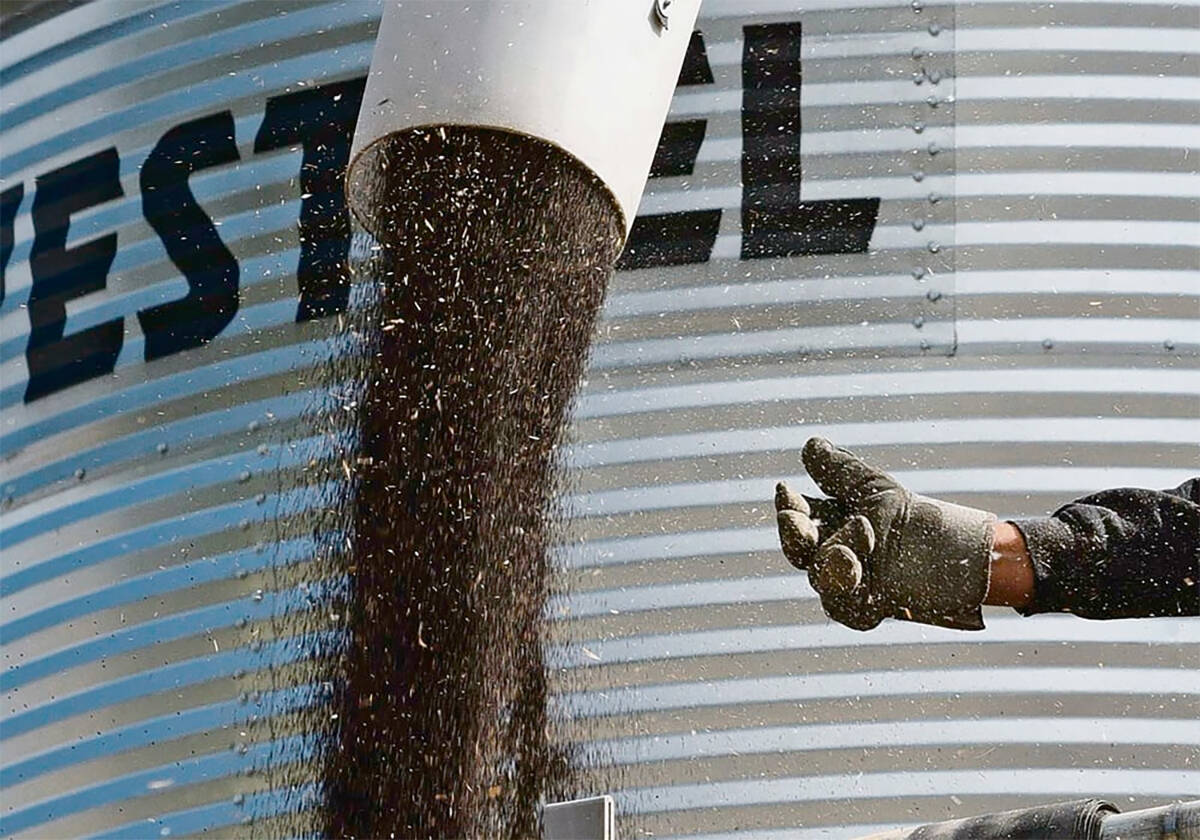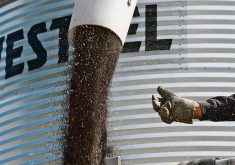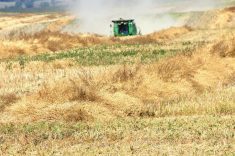Manitoba is taking the leap into commercial elk ranching, but few anticipate a smooth landing.
The government here made elk ranching legal Feb. 1 and in a Sept. 25 draw, plans to sell 260 captured wild elk.
New ranchers, who could find themselves paying up to $8,000 for cows and heifers, say farmers who owned elk illegally before the rules came in are getting a break. They have to pay a flat fee per animal to get into the industry – $1,000 if they bought their elk outside the province and only $50 if they had a permit from the department of natural resources.
Read Also

Farmers urged to be grain-safe this fall
Working around grain bins comes with risk, from farmers falling to drowning in grain: Experts have five tips to help avoid grain-related accidents this harvest.
But a provincial agrologist specializing in alternative livestock said those producers paid once for their animals and shouldn’t be forced to pay again.
“With the registration fee and the price they already paid, it’s in the ballpark,” said Emerson Trout, of Manitoba Agriculture.
Manitoba should be leading the pack when it comes to elk farming since it set up the first experimental farm in the early 1980s. Instead, the province trails years behind, said Kelly Taylor, vice-president of the Manitoba Elk Growers Association.
“It has been political all this time and there’s just been no willingness to move,” said Taylor in interview at his farm west of Brandon. His herd stems from seven females he acquired in 1988 by permit.
Taylor said public pressure pushed the province to back away from elk farming even after the 1980s pilot project was a success. It should have paved the way for a lucrative industry here but public outcry turned the issue into a political mess, Taylor said.
“The experiment was cancelled in Manitoba but in the rest of Canada it took off,” he said.
People here weren’t ready for an elk industry 10 years ago, said Trout. “Some people don’t like the farming of wild animals.”
The 339 elk that were on farms in Manitoba before the new rules came in must be tested for their DNA and purity, checked for tuberculosis and other diseases and guaranteed free of spinal deformities. Only producers who prove ownership will obtain a licence, Trout said.
Ranchers like Taylor who already own elk aren’t eligible to participate in the draw.
Farmers getting in now will pay a lot more than their counterparts in Saskatchewan and Alberta, where a total of 20,000 elk are raised.
“If the bottom goes out of the market you’re in big trouble,” Taylor said.
Trout said there will be about 80 elk ranchers in Manitoba after the draw, with about 800 elk being raised here by the end of this year. The industry in Manitoba will be worth $50 million in five years, he estimated.
Taylor criticized the department for ignoring producer input. The producers recommended ranches be a minimum of 40 acres and include a woodlot to provide the animals with shelter.
It also recommended a “bona fide” farmer clause stating anyone entering the industry had to be a full-time producer or hold a part-time off-farm job to support the farm.
The province also turned down the committee’s push for mandatory pregnancy checks of the elk for sale in the upcoming draw.
The elk are expected to sell for up to $1,500 for 1997 bull calves and up to $8,000 for cows and heifers. Over $800,000 from the sale will go to the province’s elk management fund to maintain elk habitat, monitor wild herds and fund research, blood and DNA testing, identification tags and a computer tracking system.














